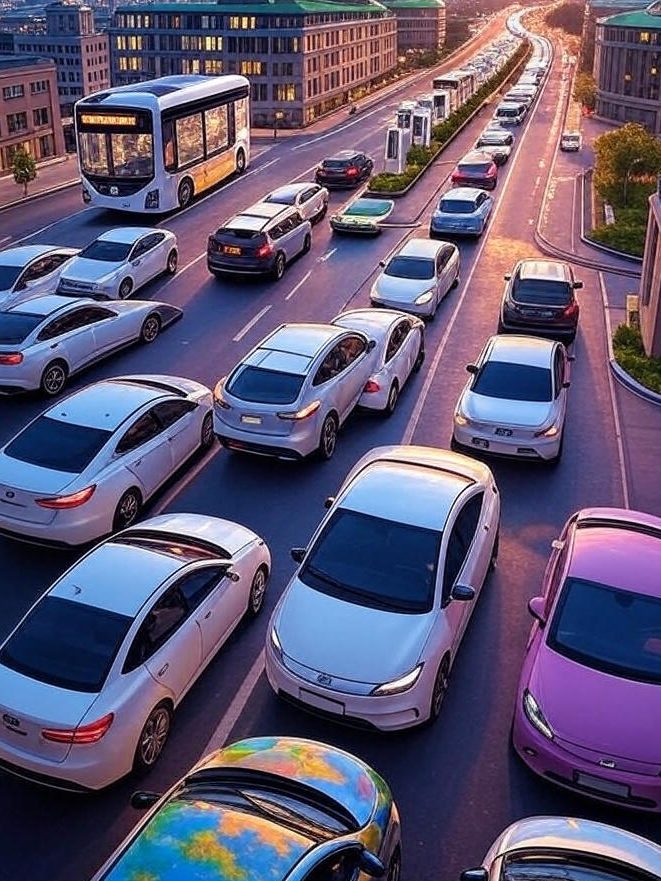
The automotive industry is undergoing a seismic shift, with electrification and hybrid vehicles leading the charge toward a sustainable future. As global demand for cleaner, more efficient transportation grows, electric vehicles (EVs) and hybrids are reshaping how we drive, fueled by technological advancements, consumer preferences, and regulatory pressures. In 2025, the global EV market is projected to reach 18.7 million units, a 7.4% increase from 2024, while hybrids are gaining ground as practical alternatives for those hesitant about fully electric options. This blog explores the trends, innovations, and challenges driving the electrification revolution and the pivotal role of hybrid vehicles in this transition.
The Electrification Boom: A Global Push for EVs
Electric vehicles are no longer a niche concept but a cornerstone of automotive innovation. Governments worldwide are tightening emissions regulations, with the European Union aiming for zero-emission new cars by 2035 and China targeting 50% EV sales by the same year. In the U.S., federal tax credits of up to $7,500 for EV purchases and investments in charging infrastructure are accelerating adoption. Major automakers like Tesla, BYD, and Volkswagen are scaling production, with Tesla’s Model Y and BYD’s Atto 3 dominating global sales.
The heart of electrification lies in battery technology. Lithium-ion batteries remain the standard, but breakthroughs in solid-state batteries promise higher energy density, faster charging, and improved safety. Companies like Toyota and QuantumScape are testing solid-state prototypes, with commercial rollout expected by 2027. These batteries could extend EV ranges beyond 500 miles, addressing a key consumer concern: range anxiety.
Supply chain disruptions for critical minerals like lithium and cobalt, coupled with geopolitical tensions, pose risks to scalability. Public charging infrastructure, while expanding, remains uneven, with rural areas lagging behind urban hubs. These challenges underscore the importance of hybrids as a bridge to full electrification.
Hybrids: The Practical Middle Ground
Hybrid vehicles, blending internal combustion engines (ICE) with electric powertrains, are experiencing a renaissance. Models like the Toyota RAV4 Hybrid, Honda CR-V Hybrid, and Ford F-150 PowerBoost are top sellers, offering fuel efficiency and reduced emissions without the need for frequent charging. Plug-in hybrid electric vehicles (PHEVs) take this further, allowing electric-only driving for short commutes (typically 20–50 miles) while relying on gasoline for longer trips. In 2025, hybrids are projected to account for 25% of global vehicle sales, driven by their affordability and versatility.
Hybrids appeal to consumers wary of EV limitations. They eliminate range anxiety, as drivers can refuel at gas stations, and their lower price points—often $5,000–$10,000 less than comparable EVs—make them accessible. For instance, the 2025 Toyota Corolla Hybrid starts at around $23,000, compared to $35,000 for a base Tesla Model 3. Hybrids also benefit from existing infrastructure, requiring no new charging networks, making them ideal for regions with limited EV support.
Sustainability and Market Dynamics
Electrification and hybrids align with the industry’s sustainability goals. EVs produce zero tailpipe emissions, and hybrids significantly reduce CO2 output compared to traditional ICE vehicles. Automakers are also adopting sustainable manufacturing practices, using recycled materials and renewable energy in production. For example, BMW’s i4 is built in a carbon-neutral factory, and Ford is investing in closed-loop battery recycling.
Consumer preferences are shifting toward affordability and practicality. With rising insurance costs and economic uncertainty, buyers are gravitating toward vehicles under $30,000. Hybrids fit this niche, offering eco-friendly credentials without the premium price of EVs. Meanwhile, Chinese manufacturers like BYD and Geely are disrupting global markets with low-cost EVs and hybrids, challenging legacy automakers. The potential Honda-Nissan-Mitsubishi alliance aims to counter this competition through shared EV and hybrid platforms.
Challenges and the Road Ahead
Despite their promise, electrification and hybrids face significant challenges. For EVs, charging infrastructure must expand rapidly to meet demand, with an estimated 2.5 million public chargers needed globally by 2030. Battery production raises environmental concerns, as mining for lithium and cobalt can degrade ecosystems if not managed responsibly. Recycling programs are scaling up, but only 5% of lithium-ion batteries are currently recycled.
Hybrids, while practical, are a transitional technology. Critics argue they delay full electrification by relying on fossil fuels, and their dual powertrains increase maintenance complexity. Regulatory pressures, like California’s 2035 ban on new ICE and hybrid sales, could limit their long-term viability.
Innovation is key to overcoming these obstacles. Wireless charging, already in trials, could simplify EV use, while vehicle-to-grid (V2G) technology allows EVs to supply energy to homes or the grid, enhancing their value. For hybrids, advancements in lightweight materials and more efficient engines could extend their relevance.
The Future of Mobility
Electrification and hybrid vehicles are not mutually exclusive but complementary forces driving the automotive industry toward sustainability. EVs offer a vision of zero-emission mobility, with cutting-edge technology and government backing accelerating their rise. Hybrids, meanwhile, provide a pragmatic solution for consumers and regions not yet ready for full electrification. Together, they cater to diverse needs, from urban commuters seeking efficiency to rural drivers needing reliability.
In 2025, the automotive landscape is a blend of ambition and pragmatism. As battery costs drop and infrastructure improves, EVs will likely dominate, but hybrids will remain vital for the foreseeable future. Automakers must balance innovation with affordability, ensuring that the transition to greener mobility is inclusive. Whether it’s the silent hum of an EV or the versatile power of a hybrid, the future of driving is electric—and it’s already here
In conclusion, electrification and hybrid vehicles are transforming the automotive industry, driving it toward a sustainable and innovative future. Electric vehicles, with advancements in battery technology and expanding charging infrastructure, are paving the way for zero-emission mobility, supported by global policies and consumer demand.As we move through 2025, the synergy of EVs and hybrids ensures an inclusive transition, redefining mobility with efficiency, sustainability, and accessibility at its core.









